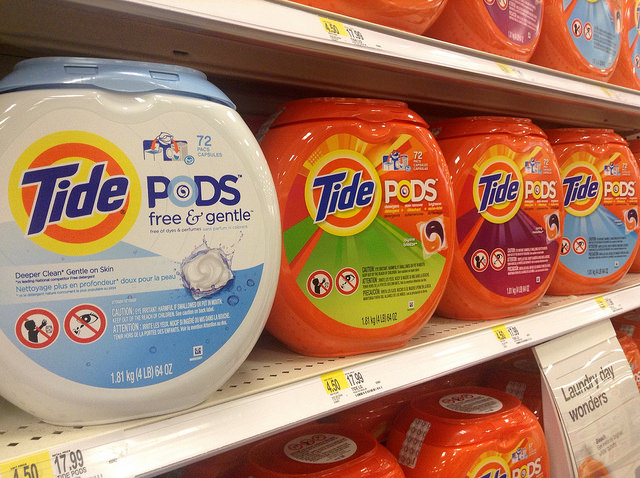
Social media platforms have increased the chances of brands going viral. YouTube is specifically known for viral challenges due to the easy access to videos and tags/keywords. As mentioned in this previous blog post, going viral can be an excellent way for brands to gain exposure; however, there are instances where going viral is potentially damaging to a brand. Two recent cases in particular have been the “faces” of viral challenges gone wrong: Tide Pods and Netflix’s film “Bird Box.”
About a year ago, a phenomenon involving the laundry detergent Tide Pods began on social media which consisted of people attempting to consume the household product. The phenomenon spread rapidly and was attempted by many, causing the brand to get involved. This consumption was called a “challenge” and was posted on YouTube, which sparked the social media platform to make a statement about people’s safety, and how YouTube planned to delete all videos of the challenge from their site. To combat this crisis and protect the public from consuming a toxic product, the company put out a timely and comical ad for the Super Bowl stating that Tide Pods should solely be used for doing laundry.
Similarly, at the start of 2019, a phenomenon based on the Netflix film “Bird Box” has taken over social media, mainly through YouTube. The film is about a mysterious force that, when seen, causes people to die. In order to survive, the population must carry on blindfolded. This concept has become yet another “face” of a viral challenge on social media. Videos have been posted of people attempting to do day-to-day activities while blindfolded. Some of those who have attempted this challenge have been in car accidents or other life-threatening situations, causing the streaming platform to speak out. Netflix tweeted about the challenge and how they highly discourage people from participating.
These crisis events from challenges mirror each other almost exactly. However, Netflix is receiving backlash because people are questioning the genuineness of their statement. Many are wary about this response because the official Netflix account had retweeted or favorited tweets that used the hashtag #BirdBoxChallenge. Controversies have also spread about the brand as many of their retweets were from accounts had very few tweets or followers – causing people to believe they were fake accounts created for the challenge. Netflix sparked social media controversy when the account initially tweeted about the challenge. Statistics had shown that only a few accounts had tweeted about the Bird Box Challenge; because of this people have come to believe that Netflix wanted to generate exposure to the challenge to promote the movie.
Whether or not these controversies prove true, these cases raise the question of how brands should respond when their product sparks a viral challenge in a negative way. Sources show that similar to any other crisis event, creating a genuine statement and addressing the issue is the best way for a brand to retain loyal consumers. PR Week wrote, “Although a brand might create more awareness of a viral challenge by addressing it, experts say that staying silent on the matter is worse. As with other crises, if a company doesn’t tell its story first, someone else will.” Tide’s way of speaking out was successful because they used NFL player Rob Gronkowski as the face of their ad, which directly assisted them in aiming toward the younger generation, or those who were interested in the challenge.
In order for brands to fully be taken seriously and avoid future crises, brands must take negative virality in the same measures as any other crisis situation. To learn more about successful crisis communication cases, click here.
